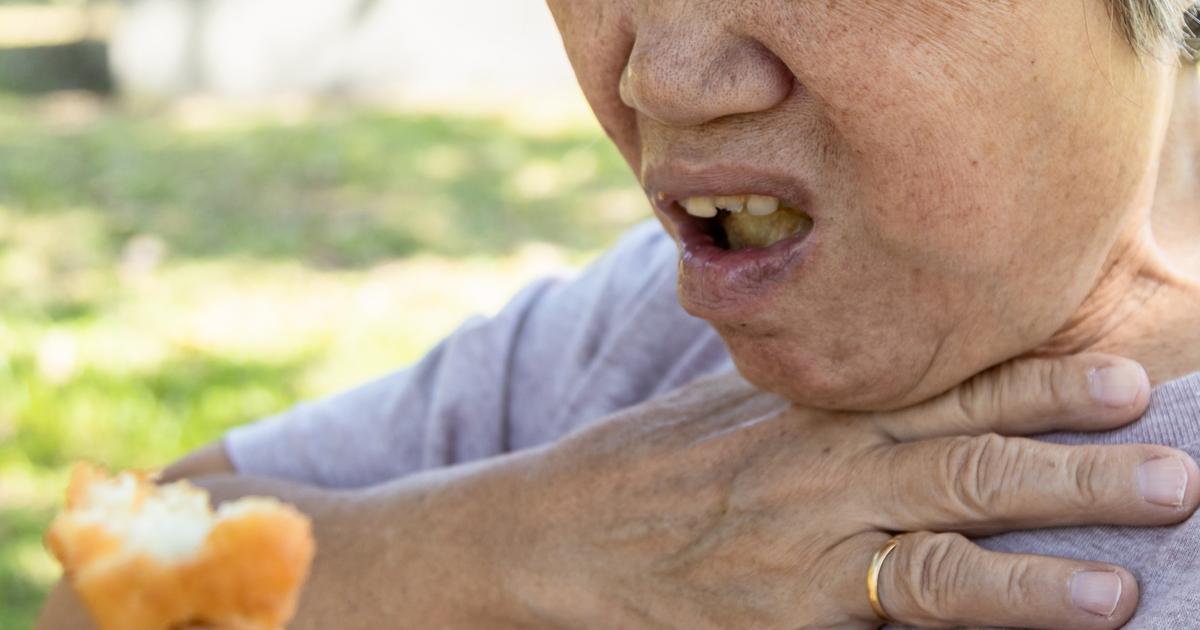Symptoms Of Eosinophilic Esophagitis
Eosinophilic esophagitis is a chronic disease of the esophageal lining associated with food allergies. Eosinophils, a type of white blood cell, respond to an allergen and begin to collect on the walls of the esophagus. They produce a protein that causes inflammation inside the esophagus. This inflammation leads to scar tissue, constricted esophagus, and the growth of extra tissue. Eosinophilic esophagitisis most commonly found in males living in a dry or cold region and can cause heartburn, chest pain, difficulty in swallowing, pain in the upper abdomen, and vomiting and regurgitation. It can only definitively be diagnosed by endoscopy and biopsy of the esophagus. Reveal the most common symptoms of eosinophilic esophagitis now.
Persistent Heartburn

Heartburn, like its name suggests, is the feeling of burning near the heart. This pain is behind the sternum and can be felt from the throat to the stomach. Regular heartburn is typically caused by eating spicy foods, consuming alcohol, or overeating. Persistent heartburn, seen with eosinophilic esophagitis, gets worse when an individual lies down and does not improve with medication. Heartburn is the major symptom of gastroesophageal reflux disease (GERD). Eosinophilic esophagitis is easily misdiagnosed as GERD, but symptoms do not get better with treatment. Gastroesophageal reflux disease is caused by the relaxation of the sphincter before the stomach, allowing acids to go up into the esophagus, whereas eosinophilic esophagitis is caused by the immune system’s response to allergens.
Keep reading to learn about more symptoms of eosinophilic esophagitis now.
Chest Pain

Chest pain is common in eosinophilic esophagitis considering the effect this disease has on digestion. This discomfort can be felt from the neck down to the stomach and is centrally located on the body. Chest pain may be caused by many factors including heart, muscle, bone, and lung issues. With eosinophilic esophagitis, the pain is a result of digestive issues. Sometimes food becomes stuck in the esophagus, unable to pass down to the stomach. Individuals who have eosinophilic esophagitis report spontaneous chest pain occurring specifically after exercising. It is crucial to seek medical attention if the pain becomes unbearable or is accompanied by pain in the jaw or arm or shortness of breath.
It's time to learn about the next symptom of eosinophilic esophagitis.
Difficulties Swallowing

Difficulties swallowing food, or dysphagia, happens due to the build-up of eosinophils on the esophagus and subsequent inflammation. The esophageal tube is narrowed, making it difficult to pass food from the mouth to stomach. Solid, dry foods can sometimes get lodged in the esophagus. This is called impaction and can cause pain. Patients with eosinophilic esophagitis must learn to chew food slowly and thoroughly to reduce chances of impaction from occurring. Eliminating foods likely to get trapped in the esophagus, such as meat, cheese, and bread, can also help with this symptom. A patient who has found relief from esophageal swelling with medicine must continue taking it, or the inflammation will return.
Continue reading to understand more symptoms of eosinophilic esophagitis.
Pain In The Upper Abdomen

Pain in the upper abdomen is often the result of food impaction in the esophagus. If the patient is unable to clear it naturally, a doctor may need to insert a tube into the throat. Should impacted food be left untreated, the body will form mucus or foam and initiate spasms in the esophagus to release the blockage. These spasms are responsible for most of the upper abdominal pain. A doctor may need to dilate the esophagus if topical steroids do not relieve inflammation. Dilation can be painful over the upper abdomen, but patients heal within days. This treatment can be performed yearly to reduce complications of the inflamed esophagus.
Get to know the next symptom of eosinophilic esophagitis by reading more now.
Vomiting And Regurgitation

Both vomiting and regurgitation are reflexive functions of the body, which means they are both involuntary. They vary in that regurgitation happens when food comes back up before it reaches the stomach. For example, if there is a food impaction, the body makes mucus and foam and the esophagus contracts to push the blockage back up. Vomiting occurs a little later when the brain’s 'vomit center' is stimulated. The stomach contracts, forcing undigested food back up through the esophagus and out the mouth. Vomiting is often accompanied by nausea and a general feeling of sickness. For children with eosinophilic esophagitis, this can lead to malnourishment and failure to thrive. They may also avoid eating altogether.
Get more details on the warning signs of eosinophilic esophagitis now.
Food Impaction In Esophagus

Food impaction describes when some sort of food becomes trapped in an individual's esophagus. This symptom typically occurs in individuals with some sort of structural abnormality in the esophagus that stops it from working properly. A healthy individual has no eosinophils or a certain type of white blood cell in the tissues of their esophagus. However, eosinophils are present in large numbers in the esophagus of eosinophilic esophagitis patients. These eosinophils cause the esophageal tissues and lining to become extremely inflamed and swollen to the point where it can be difficult for an affected individual to swallow their food properly. When the esophageal tissue becomes so inflamed that it swells to the degree where food becomes trapped in it, the individual is considered to have a food impacted esophagus and requires immediate medical attention.
Uncover more symptoms of eosinophilic esophagitis now.
Unresponsive To GERD Medication

An individual who has symptoms that do not effectively respond to treatment with the use of gastroesophageal reflux disease (GERD) medication may be affected by eosinophilic esophagitis. Gastroesophageal reflux disease is a long term condition where an individual experiences movement of stomach acid into their esophagus. It is known to be associated with low numbers of eosinophils in an individual's esophageal tissues, but not as much as an eosinophilic esophagitis patient. Medications used to treat GERD work by decreasing the production of stomach acid to prevent inflammation of the esophageal tissues. These medications will not be very effective in eosinophilic esophagitis patients because the inflammation in their esophagus is not caused by excess stomach acid. GERD medications can help prevent further damage to the esophagus of an individual who has eosinophilic esophagitis if they have acid reflux, but they cannot relieve inflammation not caused by gastroesophageal reflux disease.
Reveal additional warning signs of eosinophilic esophagitis now.
Failure To Thrive

A child diagnosed with failure to thrive may be affected by eosinophilic esophagitis as the underlying cause of their condition. Failure to thrive is a term used to describe when a child weighs significantly less than children of similar sex and age. Children with failure to thrive have a head circumference, height, and weight that does not line up with standard growth charts and are below the third percentile. Many factors can cause a child to develop failure to thrive, including problems with the functionality of their digestive tract. A child with eosinophilic esophagitis may be unwilling to eat certain foods or at a frequency that is enough to maintain their standard growth curve. An affected child may physically have trouble swallowing their food or be in too much pain when eating to consume enough calories to maintain a healthy weight. These difficulties stem from a large number of allergy cells or eosinophils in their esophagus that cause it to become inflamed and narrowed.
Learn more about the symptoms seen in eosinophilic esophagitis now.
Difficulty Feeding And Eating

A child who has difficulty feeding and eating may be affected by eosinophilic esophagitis as the underlying cause of their feeding dysfunction. Infants may present with a chronic refusal of solid foods. Many infants and young toddlers affected by eosinophilic esophagitis refused to consume meats, fruits, and vegetables unless they have been completely pureed. This feeding dysfunction makes it difficult for the introduction of new foods at the ages when it is most critical. Infants and toddlers with eosinophilic esophagitis are only able to express that the consumption of solid food is difficult or painful by the refusal to eat such foods and frustration with the process. These children may spit food out or vomit the food back up shortly after swallowing it. When solid foods are given in the pureed form, the affected child may be more open to feeding because it does not cause them to experience pain or discomfort when larger solid particles are not present.
Continue reading to discover additional symptoms linked to eosinophilic esophagitis now.
Coughing

Coughing is a common reflex action that helps an individual clear their throat of foreign irritants, food particles, and mucus. Individuals with eosinophilic esophagitis can develop scar tissue in the lining of their esophagus that causes it to become permanently narrowed. This narrowing of the esophagus can cause food particles to become stuck at the back of the throat when individuals swallow more food than can move through the esophagus at any given time. When food particles become stuck in the patient's throat, certain nerve endings trigger the reflex of coughing in an attempt to expel and dislodge food particles. Chronic coughing is often reported in individuals in the beginning stages of eosinophilic esophagitis and those who have had the condition for several years with or without medical intervention.